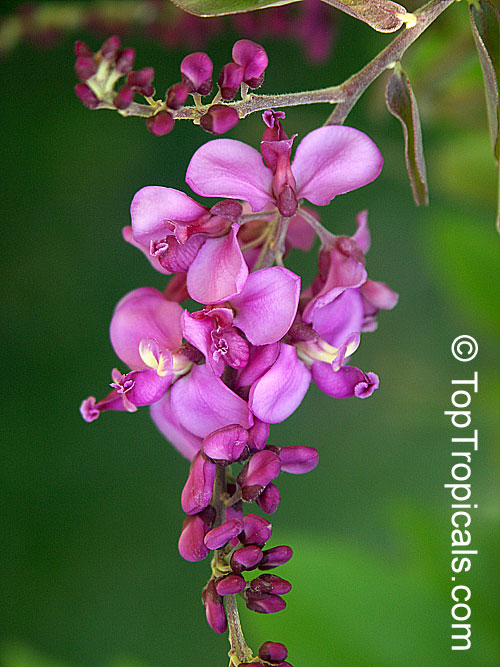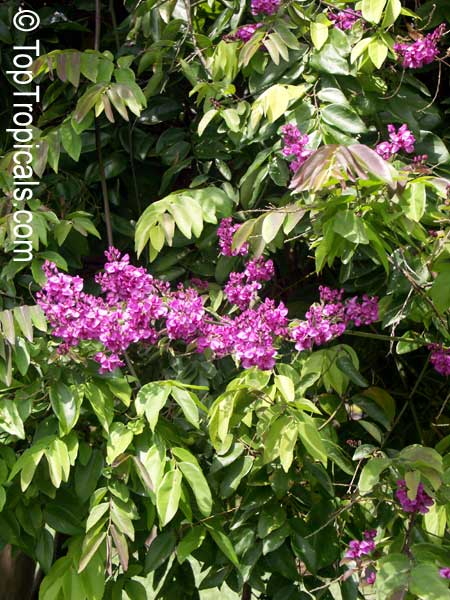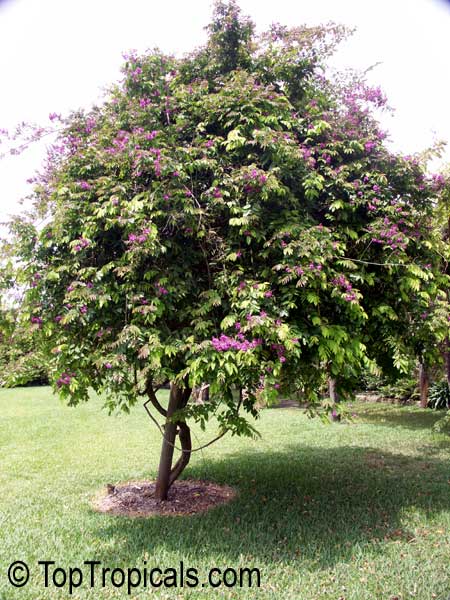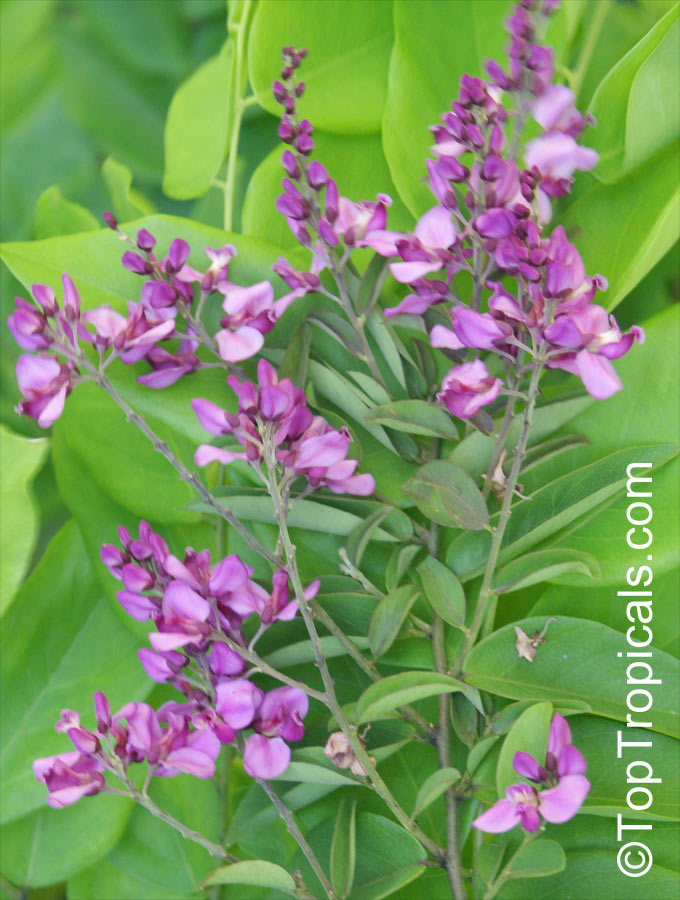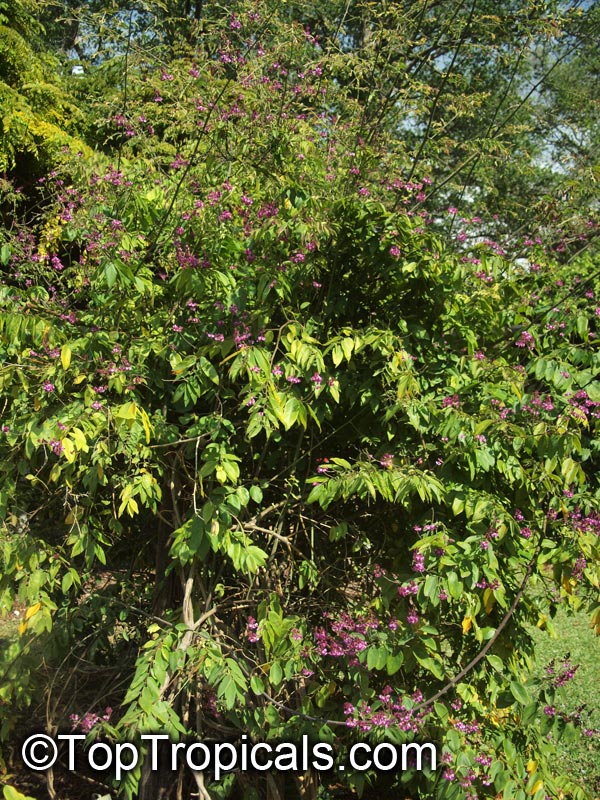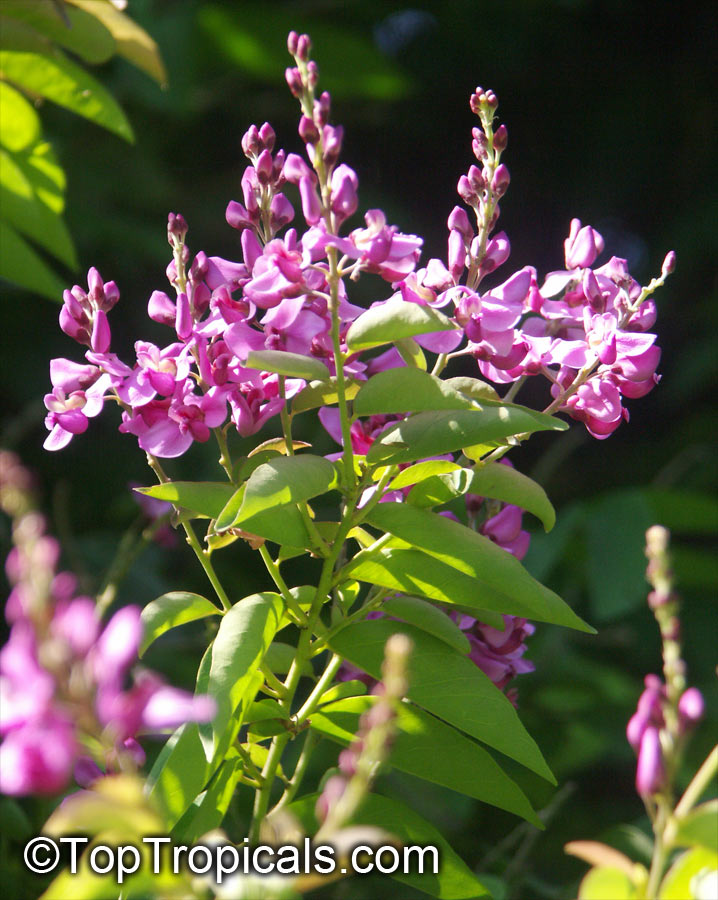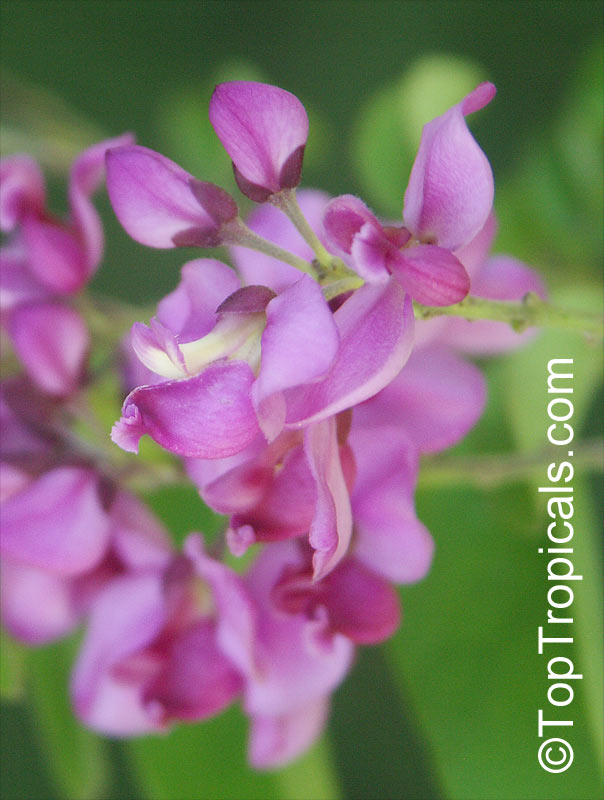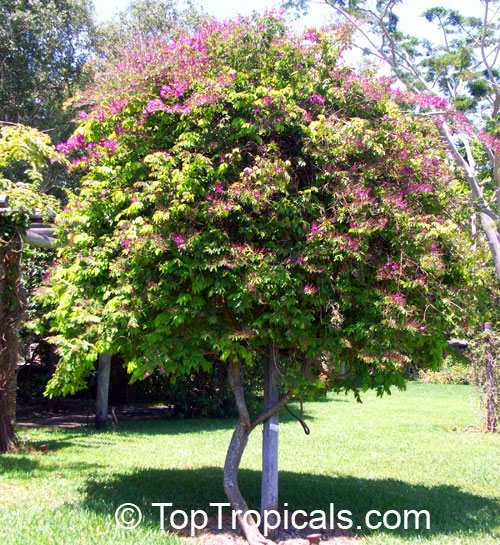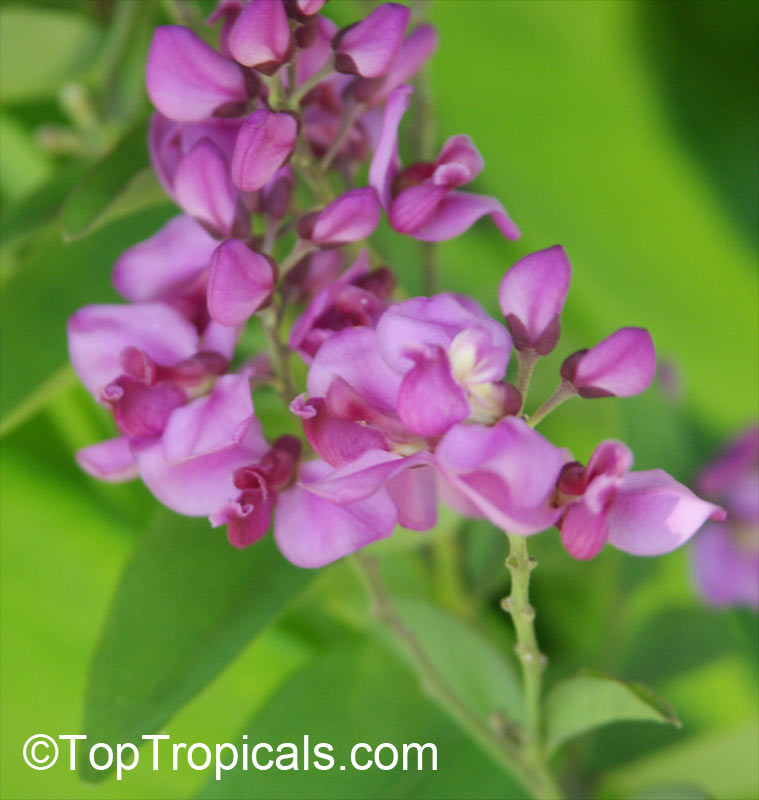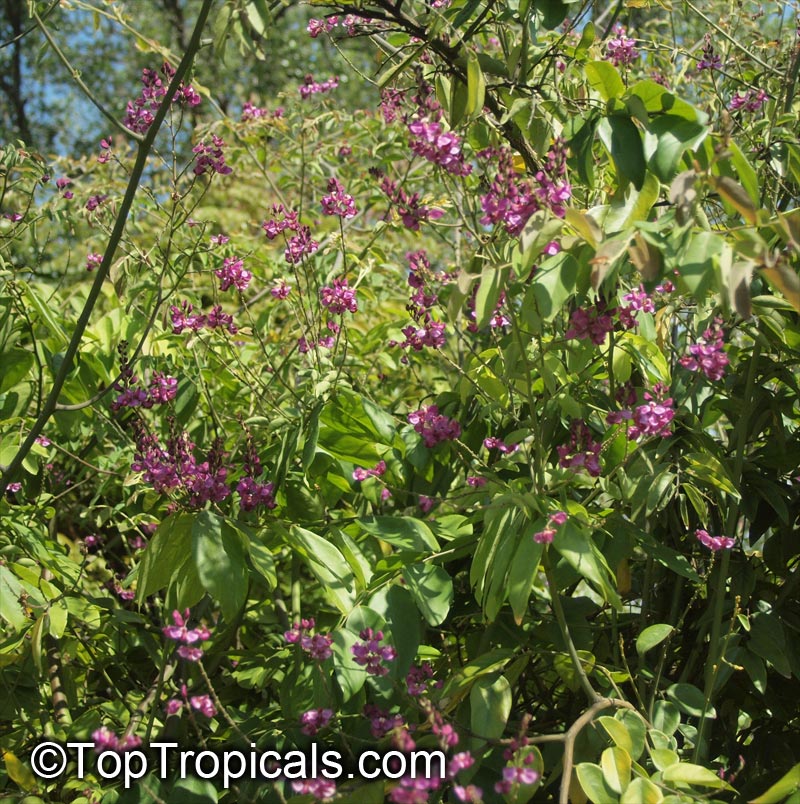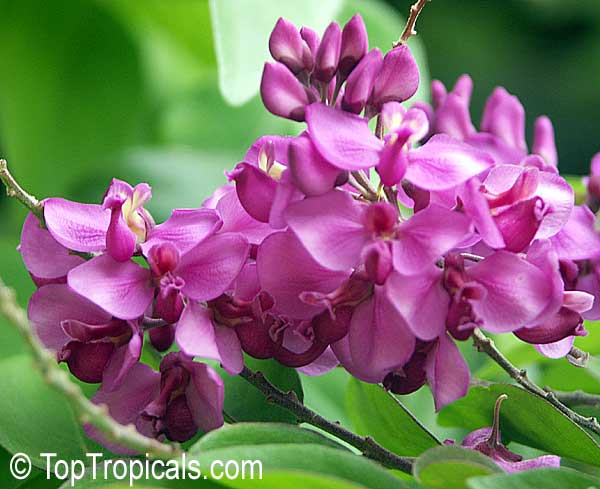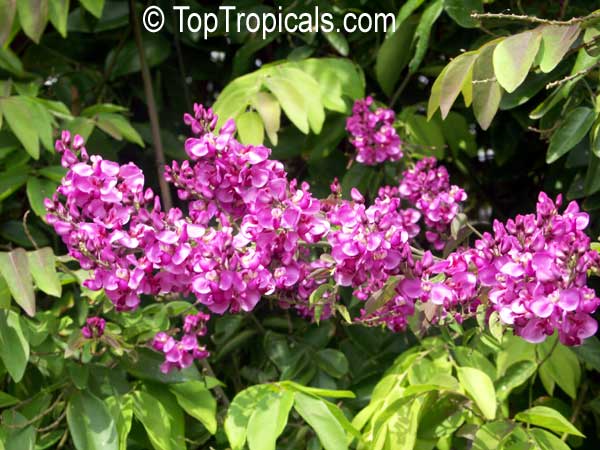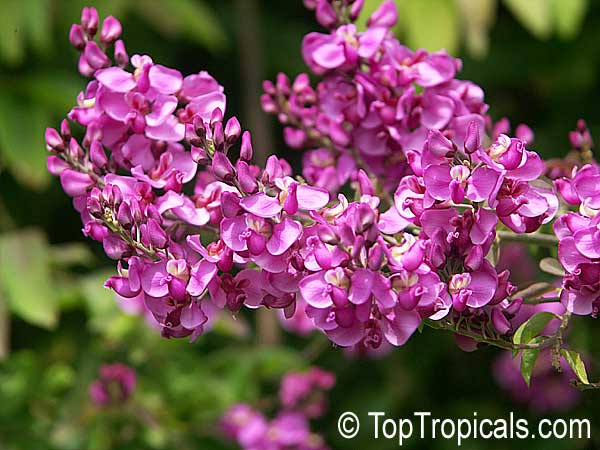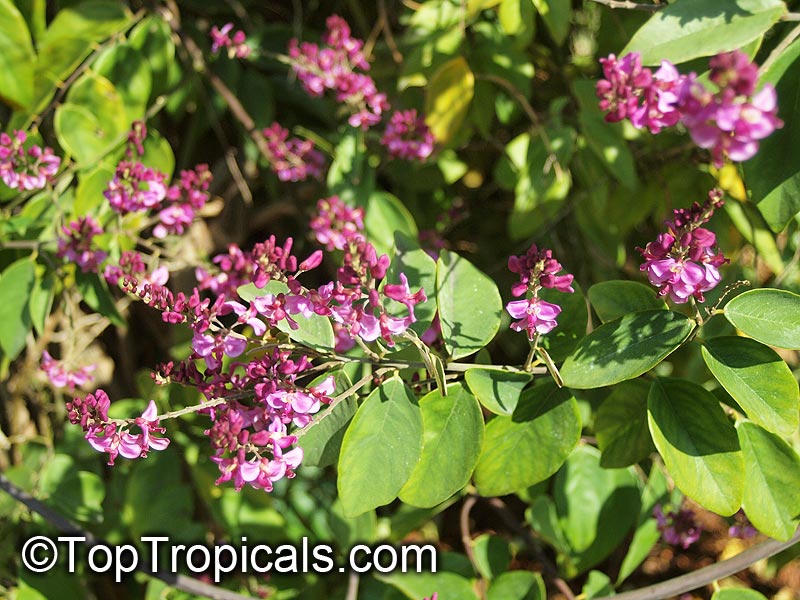Securidaca diversifolia (Easter Flower)
Top Tropicals Plant Encyclopedia
Botanical names: Securidaca diversifolia, Elsota diversifolia
Common name: Easter Flower
Family: Polygalaceae
Origin: Central America, Caribbean






Securidaca diversifolia is native to Central America and the Caribbean and goes by the common name Easter Flower. Grown in USDA Zone 9-11, it is a fast-growing, twining vine or creeper with deep roots and a tough, woody stem and branches. Its pink flowers have earned it the nickname "pinkie" among gardeners, who are drawn to its delicate beauty.
The Easter Flower is a drought-resistant plant and, in warmer climates, only needs water when the soil is dry. In very warm regions, it should be grown in semi-shade, while in colder climates, full sun will be appreciated. This plant is excellent for partially shaded borders and trellises, and thanks to its woody stem, it is strong enough to climb up even the heaviest fences!
The Easter Flower also has ethnomedical properties, being used in traditional medicine to treat venereal diseases by extracting a white juice from the stem, crushing it into a ball, and then soaking the ball in water. The resultant mixture is then boiled and an internal cure is drunk.
For the colder climates where this vine is grown, it does best if planted in a pot. Be sure to provide a planter with good drainage, as too much water can lead to root rot, and place the pot in a spot with full sun. Water moderately but regularly, and supplement feeding with a low nitrogen fertilizer by simply sprinkling a bit around the pot's edges.
The Easter Flower is beloved by gardeners for its pretty pink flowers, versatility and ethnomedical properties. Being a fast growing plant with deep roots, it won't take long to be adorned with these flowers! Remember to provide your Easter flower with semi-shade in hot climates, full sun in colder ones, and regular but not excessive water to truly make it thrive.
